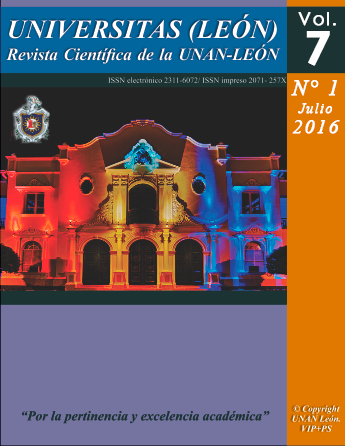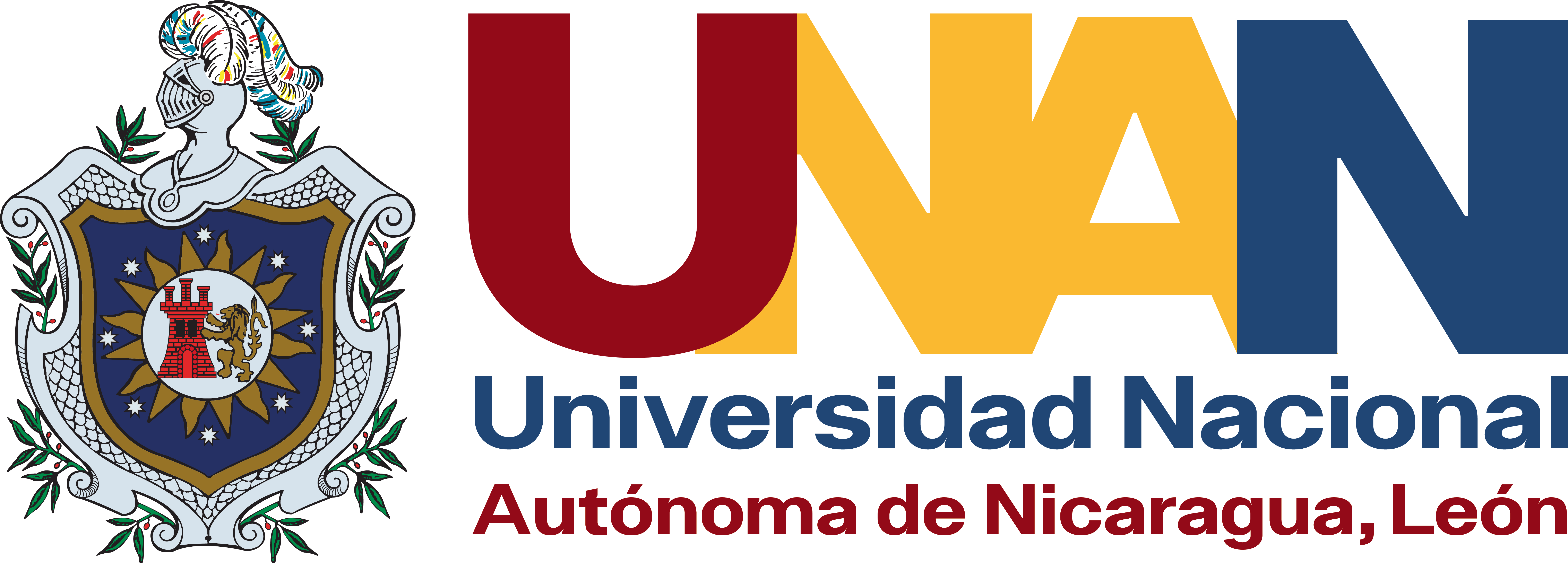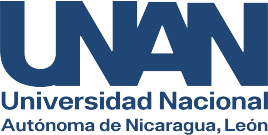Use of Augmented Reality as a didactic means for the curricular component of Computer Repair and Maintenance taught in the courses offered by the Computer Department of UNAN-León
DOI:
https://doi.org/10.5377/universitas.v7i1.13683Keywords:
Augmented Reality, Qualcomm Vuforia SDK (QCAR), Unity 3D, C# ScriptAbstract
The article presents the use of the Augmented Reality (AR) technology as a didactic tool for the curriculum component of Computer Repair and Maintenance, which is taught in the courses offered by the UNAN-León Computer Department. Of the type magazine was designed and developed an application for mobile devices with Android platform in conjunction with a printed graphic medium of the magazine type. The main idea is that the student uses, together with the application, the mobile device and the camera of the device, the printed magazine to be placed on top of the marks indicating the presence of content with Augmented Reality; The contents shown with the Augmented Reality enrich even more the information provided by the magazine itself, showing: videos, images, texts, textures in third dimension, etc. Allowing to capture the student's interest in the contents shown. A graphic medium is used because it is a didactic tool of support that illustrates in an attractive way the subjects to be approached in conjunction with the use of the Augmented Reality, offering to the student an interaction with virtual elements in real time superposing them in images denominated markers. The application is developed using the Unity 3D graphics engine which integrates the development environment MonoDevelop, which allows working with a variant of the CSharp programming language, all using the development kit for Augmented Reality offered by Qualcomm Vuforia SDK.
Downloads
References
Basogain, X., Olabe, M., Espinosa, K., Rouèche, C., & Olabe, J. C. (2007). Realidad Aumentada en la Educación: una tecnología emergente. Escuela Superior de Ingeniería, Bilbao, España.
Barfield, W., & Caudell, T. (2001). Fundamentos de Informática usable y Realidad Aumentada. Mahwah, New Jersey: Lawrence Erlbaum.
Carracedo, J. d., & Méndez Martínez, C. L. (Mayo de 2012). Realidad Aumentada: Una Alternativa Metodológica en la Educación Primaria Nicaragüense. IEEE-RITA, 7(2), 102-106. Obtenido de http://rita.det.uvigo.es/201205/uploads/IEEE-RITA.2012.V7.N2.A9.pdf
Gallego Delgado, R., Suara Parra, N., & Núñez Trujillo, P. M. (2013). AR-Learning: libro interactivo basado en realidad aumentada con aplicación a la enseñanza. Tejuelo, 8, 74-87. Obtenido de http://iesgtballester.juntaextremadura.net/web/profesores/tejuelo/vinculos/
articulos/mon08/mon8completo.pdfCabero-Almenara, J., & Marín-Díaz, V. (2014). Posibilidades educativas de las redes sociales y el trabajo en grupo. Percepciones de los alumnos universitarios. Comunicar: Revista Científica de Comunicación y Educación, 21(42), 165-172. https://doi.org/10.3916/C42-2014-16
Downloads
Published
How to Cite
Issue
Section
License
Copyright (c) 2016 Array

This work is licensed under a Creative Commons Attribution-NonCommercial-ShareAlike 4.0 International License.
Copyright © 2025 Universitas (León), Revista Cientifíca de la UNAN-León. Academic Direction. Research Department. Publication and Scientific Event Unit.










